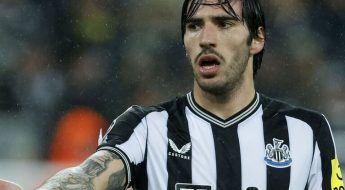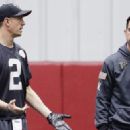Sheldon Richardson addition reflects Seahawks' philosophy: 'No finish lines'

When the Seattle Seahawks pulled off a surprise trade for tight end Jimmy Graham in March of 2015, general manager John Schneider said the reasoning behind the move was his belief that there are “no finish lines” to building a championship-caliber team.
At the time, the Seahawks were coming off back-to-back Super Bowl appearances and had come within a yard of repeating as champions. They could have stood pat, but Schneider believed that as good as his team already was, acquiring a weapon like Graham would make it even better, even at the cost of a first-round pick plus starting center Max Unger.
The same roster philosophy led the Seahawks to make their latest blockbuster move, a trade for defensive tackle Sheldon Richardson in exchange for a package that includes Seattle’s second-round pick in 2018.
That’s not to say Richardson is entirely a luxury addition. The Seahawks could use a difference-maker at defensive tackle with top pick Malik McDowell potentially unavailable for his entire rookie season, if not longer, following an ATV accident. But Seattle’s defense already featured seven Pro Bowlers, including two on their defensive line in addition to Frank Clark, who’s coming off a 10-sack season. This was not a move they had to make, but Schneider made it anyway.
The same was true with Percy Harvin in 2013, when Seattle already had Doug Baldwin, Golden Tate and Sidney Rice in its receiver corps plus a Pro Bowl kick returner in Leon Washington. Seattle gave up its first-round pick and signed Harvin to what at the time was the richest contract in franchise history. He couldn’t fit into the Seahawks’ offense nor their locker room and was dumped 19 months later.
When the Seahawks traded for Graham the following offseason, it showed that the Harvin flop didn’t leave Schneider at all gun-shy when it comes to making bold moves.
Schneider and the Seahawks’ front office take great pride in how aggressively they pursue potential personnel acquisitions, even if they never materialize.
“That’s kind of how we got guys like Ahtyba Rubin here, Cliff Avril, Michael Bennett,” Schneider told 710 ESPN Seattle in 2016. “That’s how we acquired those guys a little bit later on, just by being aggressive in terms of staying in deals. Now, we walk away from, shoot, I would say like 70 percent of them, maybe 80 percent.”
The Richardson trade was one of those moves they stuck with until the end.
The Seahawks’ defense would have still been among the NFL’s best without him. But as Schneider has shown, he doesn’t believe in leaving well enough alone.





